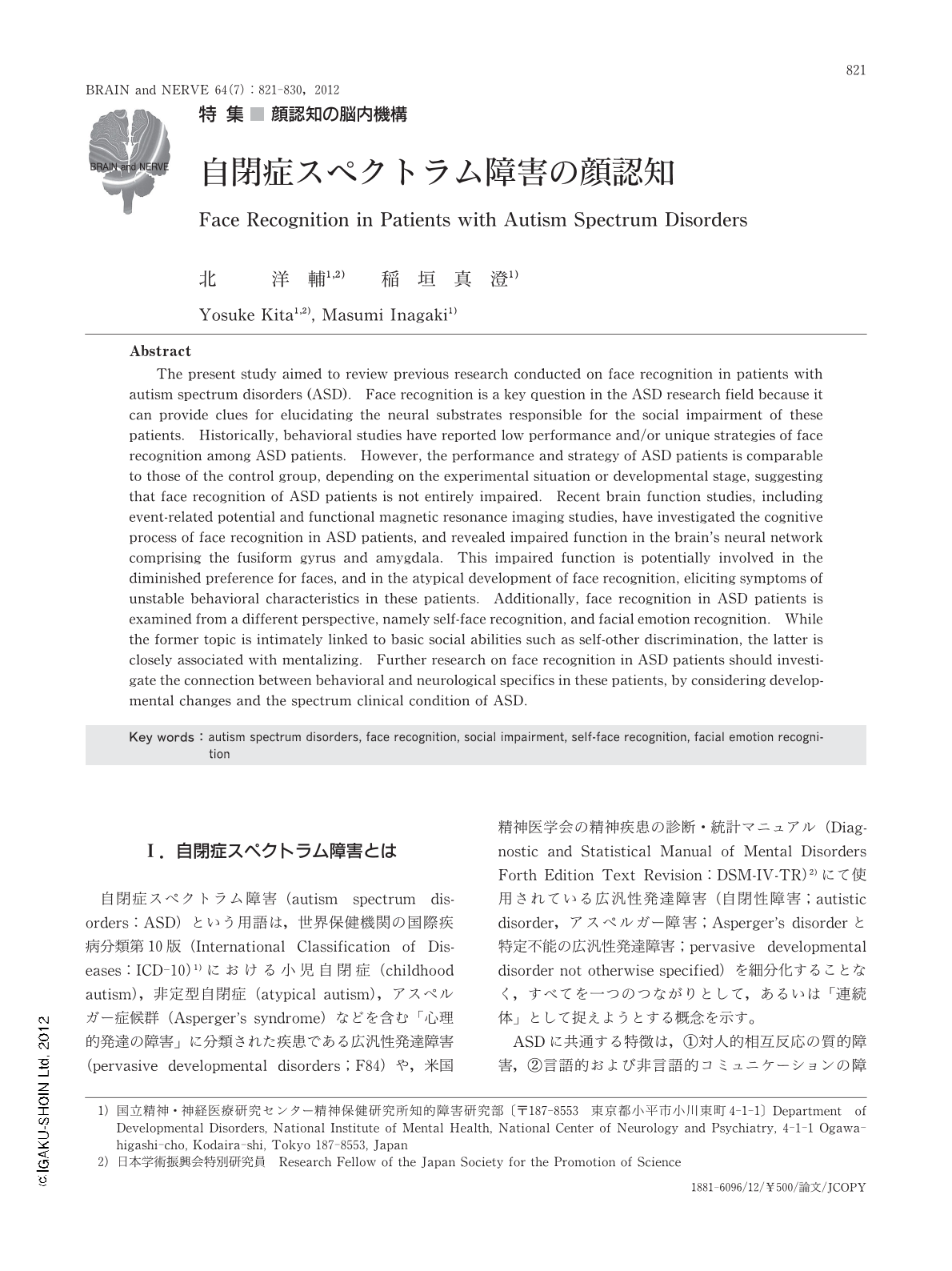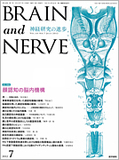Japanese
English
- 有料閲覧
- Abstract 文献概要
- 1ページ目 Look Inside
- 参考文献 Reference
Ⅰ.自閉症スペクトラム障害とは
自閉症スペクトラム障害(autism spectrum disorders:ASD)という用語は,世界保健機関の国際疾病分類第10版(International Classification of Diseases:ICD-10)1)における小児自閉症(childhood autism),非定型自閉症(atypical autism),アスペルガー症候群(Asperger's syndrome)などを含む「心理的発達の障害」に分類された疾患である広汎性発達障害(pervasive developmental disorders;F84)や,米国精神医学会の精神疾患の診断・統計マニュアル(Diagnostic and Statistical Manual of Mental Disorders Forth Edition Text Revision:DSM-IV-TR)2)にて使用されている広汎性発達障害(自閉性障害;autistic disorder,アスペルガー障害;Asperger's disorderと特定不能の広汎性発達障害;pervasive developmental disorder not otherwise specified)を細分化することなく,すべてを一つのつながりとして,あるいは「連続体」として捉えようとする概念を示す。
ASDに共通する特徴は,①対人的相互反応の質的障害,②言語的および非言語的コミュニケーションの障害,③想像力の障害および限定的な範囲での反復的・常同的活動の3点が挙げられており3,4),知的機能障害の有無や程度は問わない。現在広く使用されている診断基準では,正式な診断名としてASDを用いることはない1,2)。しかしながら,診断基準の改訂(例えばICD-11やDSM-5)5,6)が近々予定されており,その中でASDが診断名として採用される可能性が強いことや,現在の自閉症研究の潮流を踏まえて,本稿ではASDという概念を使用することとしたい。ASDの有病率は,0.3~0.9%などと報告するもの7,8)もあるが,診断基準の変遷や障害の周知度の変化によって変動している。ASDの病因は,中枢神経系の機能障害と推測されているが,その特定には至っておらず,精力的な研究が世界的に続けられている。
Abstract
The present study aimed to review previous research conducted on face recognition in patients with autism spectrum disorders (ASD). Face recognition is a key question in the ASD research field because it can provide clues for elucidating the neural substrates responsible for the social impairment of these patients. Historically,behavioral studies have reported low performance and/or unique strategies of face recognition among ASD patients. However,the performance and strategy of ASD patients is comparable to those of the control group,depending on the experimental situation or developmental stage,suggesting that face recognition of ASD patients is not entirely impaired. Recent brain function studies,including event-related potential and functional magnetic resonance imaging studies,have investigated the cognitive process of face recognition in ASD patients,and revealed impaired function in the brain's neural network comprising the fusiform gyrus and amygdala. This impaired function is potentially involved in the diminished preference for faces,and in the atypical development of face recognition,eliciting symptoms of unstable behavioral characteristics in these patients. Additionally,face recognition in ASD patients is examined from a different perspective,namely self-face recognition,and facial emotion recognition. While the former topic is intimately linked to basic social abilities such as self-other discrimination,the latter is closely associated with mentalizing. Further research on face recognition in ASD patients should investigate the connection between behavioral and neurological specifics in these patients,by considering developmental changes and the spectrum clinical condition of ASD.

Copyright © 2012, Igaku-Shoin Ltd. All rights reserved.


